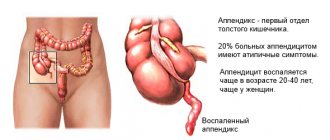Oil enema types, production algorithm
For those who have the misfortune of suffering from occasional constipation, there are many different laxatives available today.
These are medications, herbal raw materials with a laxative effect, and diets. But sometimes situations arise when none of these remedies gives the expected effect.
All that remains is to resort only to the latest and most reliable method of bowel movement - an enema.
An oil enema is a medical procedure that is used for spastic constipation to relieve the intestines of gases and feces. This is an effective way to provide emergency care for persistent constipation.
Application
Oil enemas are prescribed for the development of persistent constipation, accompanied by the deposition of hard feces in the distal intestine. Indications for use are mainly:
- postoperative period, when the intervention was performed on one of the organs located in the abdominal cavity;
- for inflammatory diseases, if they relate to the colon;
- in the first few days after birth;
- if other colon cleansing procedures have not worked.
At home, enemas are given for the purpose of gentle but guaranteed cleansing of the intestines or if it is impossible to go to the toilet for a long time. Their placement is the same as the usual ones, only here it is easier to use a syringe (bulb).
How does an oil enema work?
The effect of oil enemas as laxatives is based on enveloping the intestinal walls with a thin oil film and softening the stool. Injected into the rectum, vegetable oil makes them elastic, facilitates the movement of contents through the intestines and facilitates easier emptying.
An additional effect is provided by warm enema liquid, specially heated to room temperature before using the enema. This helps ease bowel movements and relieves intestinal spasms.
Oil enemas have a number of advantages:
- do not penetrate deep into the intestines,
- do not have an irritating effect on him,
- do not violate the algorithm of its operation,
- do not enhance intestinal motility.
To prepare an enema solution, warm (39-40 degrees) oil is used in a volume of 50 ml. up to 100 ml. This volume is quite sufficient to have its impact. The action time is approximately 10-12 hours, after the procedure you need to lie down for a while to let the solution do its job.
Sometimes it's better to see once:
Types of oils
For an enema, you can take either vegetable oil or mineral petroleum jelly. Although it is not in the literal sense of the word a natural product, it only has a positive effect on the body. The desired effect, that is, the act of defecation, occurs guaranteed.
Treatments with castor oil are no less effective. As a universal laxative, it gently cleanses the intestines, helps preserve its microflora, and enhances regeneration processes. Cleansing is performed very gently, stool returns to normal quickly.
Sea buckthorn oil, in addition to its laxative effect, has antibacterial and anti-inflammatory properties, which in some circumstances may be a reason to choose this particular option.
In addition, olive, pumpkin, flax and other types can be used. They have an equally good effect on the process of defecation. Mixing different types is not recommended.
How to give an oil enema
To carry out the procedure even at home, it is better for someone else to carry it out, it is good if it is a trusted person, since the action itself is very delicate, but it is possible to do it yourself. For one enema you need:
- take the required amount of oil, warmed to room temperature;
- take a pear of slightly larger volume;
- pour the prepared solution into a container;
- lubricate the gas outlet pipe;
- take a comfortable position, lying on your side;
- carefully insert the tube into the anus;
- connect the bulb to the tube;
- inject oil into the intestines
- Without unclenching the container containing the medicine, disconnect it from the tube;
- then pull it out.
When the administration is completed, it is recommended to lie on your side for a while, retaining the solution in the intestines.
It is better to do an oil enema before bedtime, because emptying is expected to occur after about 10 hours. If this does not happen after the specified time, it is recommended to give another enema.
How to give an enema to a child
Irregular bowel movements in a newborn do not always indicate the development of constipation. This may be due to the body adapting to the new formula for feeding. Experts say that stool retention for four to five days in a breastfed baby is considered normal. This, on the contrary, indicates complete absorption of milk.
Stool retention is a symptom that may indicate the presence of serious pathologies. That is why before carrying out the procedure you need to consult a specialist. Constipation in children is often a consequence of poor nutrition, stressful situations, physical inactivity, and allergic reactions. From this we can conclude that an enema does not cure constipation, it does not eliminate the very cause of this phenomenon, but only alleviates the condition.
To combat constipation, children can be prescribed the following types of enemas:
- cleansing. Use ordinary warm boiled water;
- medicinal. The warm solution is administered half an hour after the cleansing enema;
- siphon tests are carried out in case of severe poisoning and under the guidance of a specialist;
- oil Heated hemp, vaseline or sunflower oil is used.
Up to six months of life, the maximum amount of liquid that can be injected into the rectum is 60 ml. For children over one year of age, the norm is 150–200 ml. This indicator is also affected by weight, height, and severity of constipation. Therefore, you should definitely consult your doctor about the type of solution and its volume. In general, it is better for children under three years of age to cleanse the intestinal tract under the supervision of a specialist.
First of all, wash your hands with soap. Before cleansing the intestines, the pear must be doused with boiling water both inside and out. You should fill it with liquid and press to remove any remaining air. Don't forget to lubricate the pear with Vaseline oil. The liquid should be released from the syringe gradually, in slow bursts. The child should not feel any pain.
At the end, squeeze the baby’s buttocks with your hand for a few minutes so that the injected liquid does not immediately spill out. Next, massage your tummy clockwise. For deeper penetration of the liquid, place the child on his right side. Specialists can also prescribe special solutions, for example, chamomile, soap, soda, and saline.
In childhood, glycerin enemas are also allowed. To carry them out, you can use either a glycerin solution or pure glycerin. The technique helps stimulate intestinal motility. To carry out cleaning, you need to take a syringe based on the age of the child.
Cold and hot solutions are not used in the treatment of children. This can cause spasm of intestinal smooth muscles and discomfort. Abuse of enemas can lead to impaired intestinal motility, leaching of beneficial bacteria, weakening of the immune system, and a shift in acid-base balance.
Oil enema technique
In emergency cases, when it is necessary to quickly cleanse the body of poisons and toxins, an enema is prescribed. At the same time, oil solutions are especially popular, as they have many significant advantages.
Before using any laxative, you should be examined at a clinic. It should also be remembered that frequent and uncontrolled use of an enema leads to the leaching of beneficial vitamins, microelements and bacteria from the body.
Next, we will look in more detail at how oil enema is used effectively for adults and children.
How does an enema affect the intestines?
So, we can highlight the following benefits of an enema based on plant oils:
- The oil has a gentle effect on the mucous membrane of internal organs without damaging its structure.
- The oil does not affect the functioning of the stomach, is not absorbed into the circulatory system and does not upset the balance of digestive bacteria.
- The oil does not activate the muscle area of the intestines, so it does not affect its functioning.
- Half a glass of oily solution is enough to achieve the desired therapeutic effect.
What types of oils can be used
Today, to create an enema, you can choose almost any oil of natural origin. The most important thing is that it is free of chemical compounds, safe and environmentally friendly, prepared in accordance with international standards.
So, to prepare an enema, it is recommended to choose the following types of oils:
- Pumpkin oil. It is characterized by increased popularity because it allows you to cleanse the body of pathogenic microflora and parasites. An enema with essential oils contains natural ingredients that do not cause allergies, therefore it is approved for patients of almost any age.
- Olive oil. It is characterized by a unique vitamin and mineral composition. Allows you to quickly and safely remove toxins from the body, as well as replenish vital microelements.
- Enema with sunflower oil. This option is available to most patients, because sunflower oil is widely used in cooking. In addition, it has unique medicinal properties and is suitable for preparing an enema, for example, for constipation. At the same time, there are certain prohibitions, namely late pregnancy, obstruction of the digestive tract, allergies and internal bleeding.
- Enema based on linseed oil. It is this type of oil that is most often used for constipation due to its high content of solid fibers. In this case, you can prepare an enema to cleanse the body of toxic substances. Flaxseed oil is safe and does not cause allergies.
- Vaseline oil for preparing an enema can be chosen for patients of all ages. It contains elements that quickly liquefy hard feces and remove them from the system.
- An enema with castor oil has virtually no contraindications, which allows it to be used to treat children from the first year of life. Characterized by excellent efficiency.
Indications for use
Oil enema is allowed and recommended in the following cases:
- For rapid cleansing of the large intestine from toxins.
- To prepare the body for a medical examination.
- Before gastric surgery.
- During complex treatment of cracks and ulcers of the intestinal mucosa.
- To improve the condition of the abdominal muscular system.
- To speed up the recovery process after burns.
- After surgery to restore regular bowel movements.
Before you start cleaning, you should definitely consult a doctor who will select a safe oil for preparing an enema.
Contraindications
Oil enemas are not recommended for use in the following cases:
- Immediately after surgical intervention in the abdominal cavity, when there are fresh wounds and medical sutures.
- For malignant tumors of the colon and rectum.
- Diseases of the digestive system in an acute state, for example, appendicitis, proctitis, colitis.
- Intestinal and uterine bleeding.
- Diseases of the cardiovascular system.
- Rectal prolapse.
- Anal fissures with bleeding.
- The risk of developing an allergy to one of the components of vegetable oil.
https://youtu.be/lRoBZq_-iRk
Instructions for taking castor oil, dosage
Castor oil is effective for constipation in both liquid form and capsules. When using castor oil, you must read the instructions, which indicate the recommended doses for adults and children.
Sometimes, after taking the medicine, the stomach begins to “twist”. This is considered normal, as the expected reflex contraction of the intestinal muscles and the movement of hardened masses occurs.
How to take castor oil internally for adults
For constipation, adults are recommended to take 20-30 g of castor oil (or 20-30 capsules) per day. It is best to break the dose into parts and drink them over 20-30 minutes. For quick swallowing, the oily liquid is slightly heated, this reduces its viscosity.
After taking the product, it is recommended for 10-15 seconds. hold your breath, and then wash it down with tea, juice or chew a slice of orange or a handful of raisins. The optimal time of day to take the medicine is at night. The course itself is designed for 2-3 days.
It must be remembered that the day after cleaning should be a fasting day.
In the diet:
- light soups;
- oven-baked apples;
- salads with vegetable oil;
- drinking plenty of fluids.
How to take castor oil capsules
Castor oil for oral use is available in 2 forms: in the form of an oily liquid and in gelatin capsules. The second variety is most often in demand, as it rarely causes a gag reflex. Each capsule contains 1 g of the substance; when taking the required amount of medicine, it is recommended to wash it down with ginger drink, warm milk or tea.
How to do a cleansing enema with castor oil
An enema with castor oil (as well as with sunflower and sea buckthorn) is used for chronic constipation. This is due to the properties of the oil such as softening, enveloping and enhancing gliding.
To carry out the procedure, castor oil is heated to 37-37.5°C. The warm mass helps relax the intestinal walls, the oil solution softens the stool and lubricates the walls of the rectum (this will improve glide and prevent the absorption of fluid from the intestine).
Castor oil is an effective remedy that is often used for constipation.
The procedure for performing an enema is as follows:
- The syringe is sterilized by boiling (5-7 minutes). The volume for an adult is 50-100 ml, for children - about 20 ml.
- The mass is prepared for administration. You can use both pure raw materials and a solution (3 tablespoons per 100 ml of heated water - 38°C).
- The syringe is filled with the prepared liquid.
- The patient lies on his side, and the tip of the syringe, lubricated with an oil solution, is inserted 4-5 cm into the anus (2 cm for children).
- The contents are squeezed out, and the syringe, in a clamped state, is pulled out.
- After the procedure, it is recommended to lie down for 15-20 minutes.
Oil enema technique
An oil enema for constipation should be performed according to all the rules. Otherwise, there is a risk of injury to the rectum.
Algorithm for performing an oil enema:
- To wash hands;
- Prepare the necessary equipment: bulb (syringe) or syringe, gas outlet tube, oil. The pear and gas outlet tube must first be sterilized, that is, boiled for 10 - 15 minutes;
- It is not enough to heat it in a water bath to 38 degrees. Hotter oil will burn the mucous membrane, and cold oil will not give the proper laxative effect (the intestines may react in the opposite way);
- The patient must be placed on his left side. His legs should be bent at the knees and brought towards his stomach. It is best to carry out this procedure before bedtime;
- Draw the required amount of oil into a bulb or syringe. Adults are given 50 milliliters (if the enema is given at night) or 100 milliliters (if the enema is given during the day). Children under 1 year of age will need about 1 milliliter of oil. To do this, the pears are squeezed in the hand (releasing air from it), and its tip is immersed in a container with oil. After which the pear is released and the oil flows into it;
- A bulb or syringe is connected to a gas outlet tube (for children under one year of age, an enema is given only with a bulb without a gas outlet tube). The end of the tube should be generously lubricated with oil, for example, Vaseline;
- Lightly press the bulb so that the oil comes out of the tube. This will help push out excess air, which can cause intestinal colic if it gets inside with oil;
- Spread the patient's buttocks and carefully insert the gas outlet tube into the rectum (first towards the navel, when you feel an obstacle, point the tip parallel to the spine);
- Gently and slowly introduce the oil into the intestines. To do this, you need to slightly squeeze the bulb or slowly press on the syringe plunger;
- At the end of the procedure, carefully remove the gas outlet tube from the rectum and squeeze the patient’s buttocks so that the oil does not spill out.
The person should remain lying on his side for a while. If the enema is done during the daytime, then you need to lie down for 20 - 30 minutes. If the procedure was performed at night, you should not get out of bed.
Varieties
There are several types of enemas that can help with stool retention:
- cleansing Allows you to wash feces not only from the rectum, but also from the upper intestinal tract. A cleansing enema does not affect the tone of the organ, as well as the receptors of the mucous membrane;
- oil Combats hard stool deposits. To carry out the procedure, vegetable oil is taken. This type of enema relaxes the intestinal walls and also envelops the mucous membrane. The therapeutic effect occurs after approximately eleven hours;
- hypertensive. It is usually used if a cleansing enema is not suitable for a person. To carry it out, a saline solution is used, which draws fluid from the intestinal walls and enhances peristalsis.
Cleansing
To maintain hygiene measures, you must first cover your work area with oilcloth. To carry out the procedure, you will need 1.5–2 liters of boiled water. The hose of the Esmarch mug is pinched, after which liquid is poured into the device and suspended at a sufficient height. The water temperature should be 37–38 degrees.
To stimulate intestinal contractions, the temperature should not exceed twenty degrees. If you want to relax your muscles, water at 37–42 degrees is best. To distribute water throughout the intestines and soften stool after an enema, you need to lie down.
To carry it out, you can take various oils:
- olive;
- sunflower;
- hemp;
- Vaseline;
- sea buckthorn
Take a rubber bulb and 50–100 ml of warm oil. It is better to do an oil enema at night, the result will be exactly after waking up in the morning. If after the specified period the act of defecation does not occur, it is recommended to give a cleansing enema.
Hypertensive
This is the fastest way to get rid of fecal accumulations in the rectum. Despite its high effectiveness, experts recommend performing such an enema as a last resort, when the first two options have failed.
You can use both table and sea salt. Take a rubber bulb and 100–200 ml of saline solution. You should take 55 g of product per liter of water. Ready-made hypertonic solution can be purchased at a pharmacy. Immediately after cleansing, profuse loose stools occur.
Oil enema indications with vegetable oil
Modern medicine has an abundance of various drugs that are intended to treat certain pathological conditions. At least 30 percent of the population experiences bowel dysfunction. To correct this pathology, doctors often prescribe tablets, syrups and other remedies. Microenemas for constipation are also often used. This article will tell you how to administer such a medicine correctly. You will also find out what kind of reviews the microenema receives.
What it is?
A microclyster is the administration of the drug by the rectal route. This is necessary to correct one or another pathology. It is worth noting that microenemas are an excellent alternative to some medications. After all, not all drugs can be well tolerated when used orally.
The most popular among such remedies is microenemas for constipation. However, medicine also knows other indications for the use of this kind of medicine. Thus, the following types of microenemas can be distinguished:
- cleansing;
- laxative;
- softening;
- anti-inflammatory;
- medicinal (medicinal).
How is a microenema different from a regular enema? In the first case, the drug is injected into the human rectum in an amount of 1 to 20 milliliters. Whereas a regular enema involves the use of liquid in a volume of at least two liters.
How to make a choice?
Reviews from doctors about this treatment say that any such intervention in the body is stressful for it. That is why you should not use certain compounds without a prescription. Before doing a microenema, consult a doctor and get the appropriate recommendations.
It is worth noting that drugs are administered in different ways. Thus, microenemas with chamomile (anti-inflammatory) should be administered exclusively into cleansed intestines. When it comes to stool retention, the drug is used in a different way. In all situations, it is recommended to administer it when the patient is lying on his left side. This position will contribute to the correct distribution of the composition throughout the intestines. Let us consider in detail how to make a microenema in different situations.
Medications
Microenemas for constipation are administered when stool is retained for more than three days. Also, the medication can be used before a variety of interventions and procedures. It is worth saying that a microenema for constipation is an instant remedy. This is what distinguishes the drug from many other formulations. If, after using tablets or suspensions, defecation is promised within six hours, then the microenema works within 10 minutes.
There are several types of drugs with this effect. However, Microlax is considered the most popular. The Norgalax microenema has also become widespread. These remedies are similar. They are small plastic pipettes in which the medicinal substance is placed. Before use, you must unscrew the tip of the microenema and carefully insert its spout into the anus. If necessary, you can use one drop of the drug for a gentler administration. You need to lubricate the tip with it. Next, with a sharp squeeze of your fingers, squeeze out the contents of the pipette and, without releasing the pressure, remove it from the anus. Within a few minutes the microenema will begin to act. Instructions for using the drug are always included. Be sure to study it before using the medication.
Folk remedies
To get rid of constipation, you can do a cleansing or laxative microenema. In this case, the ingredients of the medicine will be oil, glycerin, honey, coffee or starch. For mild constipation, a softening microenema can be used. In this case, the main component will be a dairy product.
It is worth noting that the use of folk remedies may be unsafe. The most common side effect is excessive bowel movement. However, it is completely non-life-threatening and can be eliminated with symptomatic correction.
Possible complications
Not all doctors consider an enema a necessary medical procedure. Oral laxatives achieve a similar effect, but with fewer side effects. In addition, during cleansing, some intestinal bacteria, the so-called microflora, are washed away. After almost every enema, it is necessary to restore the intestinal microflora. It is worth noting that an enema before childbirth is currently not used everywhere.
Microbiota
Important! Alternative medicine and naturopaths recommend frequent enemas to cleanse the colon. However, long-term use of clysters can cause dehydration, disturbances in electrolyte concentrations and intestinal bleeding.
Colon cleansing with olive oil
Olive oil is a source of good health and longevity. Olives and olive oil are rich in monounsaturated fatty acids. Thus, olive oil increases the level of good cholesterol and reduces the level of bad cholesterol, i.e. The oil maintains normal (healthy) cholesterol levels. In addition, the oil has a mild laxative and choleretic effect, eliminates heartburn and irritation of the gastric mucosa, and is ideal for the treatment of peptic ulcers.
Olive oil ingredients: chlorophyll, carotene, lecithin (a natural antioxidant that affects the burning of fat, sugar and protein), polyphenols (antioxidants), and vitamins. The oil has the greatest effect on the heart and blood vessels, due to its high content of monounsaturated fatty acids. Thus, it protects the heart, blood vessels, and reduces blood pressure. In addition, the oil strengthens bone tissue, relieves joint pain and has anti-rheumatic properties.
Studies have shown that patients with cardiovascular disease who took 25 ml (2 teaspoons) of olive oil for a week began to feel significantly better. Harmful substances were neutralized in their bodies, intestinal function improved, and bad cholesterol levels decreased.
Conclusion: olive oil perfectly cleanses the body, intestines, and serves as a preventive measure against the development of cardiovascular diseases (read here).
Health Benefits of Olive Oil
Olive oil is an extremely healthy product. It protects and helps fight many serious diseases. B-sitosterol contained in the oil prevents the formation of prostate cancer cells. Recent studies have shown that olive oil has a beneficial effect on the colon, protects the intestines from cancer, and reduces bile and diamine oxidase levels.
Olive oil protects against arthritis and promotes bone growth, because... it contains useful vitamins E, A, C, D and K; calcium. Nutrients are easily absorbed by the body. The oil also contains a large amount of antioxidants that protect cells from aging.
The benefits of olive oil for the intestines and stomach
Olive oil treats stomach and duodenal ulcers, gastritis, by reducing the amount of stomach acid. The oil also protects against cancer and chronic intestinal inflammation.
To prevent intestinal diseases, it is recommended to consume 2–3 teaspoons of olive oil per day.
In addition, the oil prevents the formation of gallstones, regulates the secretion of bile, has a beneficial effect on the liver, and helps the body eliminate waste and harmful substances.
Colon cleansing with olive oil
Olive oil can be used to cleanse the intestines, as well as as a preventive measure against various intestinal diseases. Also, little can be used for a laxative effect, against constipation, and to cleanse the liver.
Method No. 1 (laxative enema)
For constipation, you can use a laxative enema with olive oil. Take 100 ml of warm oil (37 degrees), fill the bulb, and give an enema. As soon as you give the enema, you need to lie down for 10 minutes, then you should have a bowel movement. The oil promotes gentle removal of feces.
A few days before the cleanse, you should switch to a vegetarian diet. On the first day of cleansing, take 1 tablespoon of cold-pressed olive oil in the morning on an empty stomach, then immediately drink 200 ml of warm boiled water. This way it should be cleansed within 2 weeks. Exclude from the menu: animal fats, meat, coffee, alcohol.
Another popular method (colon cleansing with olive oil). Every morning, keep (chew) 1 tablespoon of olive oil in your mouth. The oil should be kept for about 15 - 20 minutes, then spat out and rinse your mouth. Cleansing course: 1 – 3 months.
For persistent constipation, as well as for intestinal problems, it is useful to drink 2 teaspoons of olive oil in the morning on an empty stomach. After consuming the oil, it is useful to drink a glass of slightly acidified warm water (lemon juice). Cleansing course: 1 month.
How to take orally
Due to the laxative effect, there are certain nuances in how to take castor oil. It refers to fast-acting agents. Within literally an hour or two a person feels the urge to go to the restroom. Therefore, when choosing the time to take castor oil internally, you should take this fact into account. The most suitable thing is a weekend or vacation, when the whole day is free and you don’t have to go anywhere.
Often drink the product once a week, 1-2 teaspoons, with a glass of water. After this you can no longer eat. There are also several ways to increase the effectiveness of the product and smooth out its unpleasant taste and smell:
- The oil can be mixed with chicory decoction. The latter has a rejuvenating effect. In addition, chicory reduces appetite.
- In a 1:1 ratio, castor oil for weight loss is mixed with flaxseed oil. The mixture is then dissolved in water. Flaxseed oil also promotes weight loss, plus it additionally reduces the unpleasant aftertaste.
- For the same purpose, castor oil is “seized” with raisins. It also has an improving effect on digestion.
You should not drink the product for more than a week , otherwise intestinal function may be disrupted, dehydration and decreased immunity may begin. During the reception, one should not forget about the drinking regime. You should drink as much water as possible. You should also eat light food, that is, include more fruits and vegetables, protein foods. And you need to reduce sweets, salty and smoked foods, flour products, fast food and semi-finished products.
You can replace the unpleasant oil in a jar with pharmaceutical capsules. They have a gelatin shell. When swallowing the capsules, a person does not feel either the taste or smell of castor oil.
Castor oil capsules
Enema recipes
For this procedure, you can use various oils of plant origin. However, you should remember that different types of oil cannot be mixed with each other!
Colon cleansing is carried out using the following oils:
- Sunflower oil. This product can be found in any kitchen. Sunflower oil has a good laxative effect. In addition, it is rich in vitamins, minerals and polyunsaturated fatty acids. These substances are absorbed into the intestinal walls and have a beneficial effect on the body;
- Castor oil. This oil has long been used to combat constipation. It contains acids that interact with intestinal enzymes. Thanks to this, it is emptied;
- Sea buckthorn oil. It has a laxative and wound healing effect. If there are cracks and inflammation in the rectum, it is recommended to use this oil. However, before using it, you should make sure that the patient has no allergies;
- Vaseline oil. This is not vegetable oil, but mineral oil. However, it also copes well with spastic constipation.
It is recommended to combine this type of enema with taking the oil orally. Here are some recipes for constipation using oils:
- You need to take 1 teaspoon of lemon juice and 1 tablespoon of any vegetable oil;
- 1 tablespoon of flaxseed oil every morning during breakfast;
- On an empty stomach, take 1 tablespoon of castor or flaxseed oil, after which you should not eat anything for 30 to 60 minutes.
What types of oils can be used
Pumpkin oil
This type is the most popular among the others; it is taken more often because it has good antiparasitic properties.
This remedy is based on a natural herbal product and can be used at any age of the patient if the correct functioning of the intestines is disrupted.
Olive oil
If you have had no bowel movements for a long period, this is a sign of a large number of abnormalities. This means you need to immediately begin treatment and use olive oil for constipation. This remedy not only has an effective effect, but also has a safe effect on the patient’s body.
Olive oil contains a large number of beneficial components.
Vegetable oil
This type should be used only after the signs of the disease have been accurately determined, because when used during normal periods, it can have a laxative effect and have a bad effect on the body.
Contraindications to the use of vegetable oil:
- pregnancy at any stage;
- intolerance to components in oil;
- bleeding in the intestines;
- intestinal obstruction.
Linseed oil
For constipation, large amounts of laxatives are often used, but home remedies such as oils are more effective. Very often, flaxseed oil is used for constipation.
This species has a lot of useful substances and has laxative properties.
Vaseline is not enough
This type of oil is used at any age. It contains a large number of useful components, which explains its excellent approach to a delicate problem.
Castor oil
For constipation, diet is very important, and castor oil is also often used. This type also has an excellent effect, like all the others. It has few contraindications compared to medications. Therefore, it is often used at any age.
Indications for performing an enema
An oil enema is a type of enema that gently cleanses the intestines. That is why it is used in cases where other cleansing methods cannot be used.
Indications for an oil enema:
- Spasmodic constipation. In this case, fecal retention occurs due to severe spasm of the intestinal walls. With this type of constipation, you cannot do a cleansing or siphon enema, as they can cause damage to the mucous membrane or rupture of the intestinal walls;
- Persistent constipation, in which other procedures have not resulted in bowel movement. The oil envelops the walls of the organ and fecal stones, while they soften and are removed;
- Inflammatory pathology of the large intestine (colitis, ulcers) and rectum (proctitis, paraproctitis, rectal fissures) in remission. In this case, the procedure is carried out only as prescribed by a doctor (proctologist, surgeon);
- The period after surgical treatment of the abdominal organs;
- Postpartum period. After childbirth, a woman may find it difficult to empty her bowels. This is due to the fear of divergence of existing seams on the perineum, pain, and insufficient fluid intake. An oil enema in this situation is the most optimal solution to the problem.
Contraindications
There are different types of enemas. Many are used for medicinal purposes, some are prescribed purely to cleanse the body, they are used for purposes such as:
- Before surgery;
- Before ultrasound;
- For colonic constipation;
- For proctogenic constipation.
Enemas are not recommended for continuous use and are not a cure; they act only as a temporary measure.
Although there are some diseases in the presence of which it is contraindicated:
- Surgical treatment of the abdominal cavity;
- Rectal cancer;
- Haemorrhoids;
- Postoperative period;
- Appendicitis, peritonitis;
- Colitis, segmoiditis, proctitis;
- Rectal disease;
- Uterine bleeding;
- Acute surgical pathologies;
- Heart failure;
- Rectal prolapse.
How to do an oil enema for constipation at home
People who often face the problem of constipation know firsthand what an enema is and how it works on such a delicate problem. An oil enema for constipation is the most reliable and effective remedy for persistent constipation. This type of enemas has several advantages:
Preparation
To give an enema, you must have a pear-shaped balloon (enema), rubber gloves and a gas outlet tube, as well as oil. The dose of the oil used is 100-200 ml.
Cover the place where the procedure will be carried out with oilcloth. The oil should be heated to +37°C.
Lubricate the tip with Vaseline oil.
The patient must lie on his side during the procedure and after it for about several hours.
To avoid any contraindications, it is recommended not to mix different types of oils, since fecal matter does not care what product envelops it.
Most often, these procedures are done before bedtime, because after its completion the patient is recommended to rest and sleep.
For one procedure, a solution is prepared in which 20 grams are diluted per half liter of water. oils
Cooking recipes
There are many different recipes for using oil remedies for constipation. Here are the most popular:
- You need to drink 1-2 tablespoons of oil on an empty stomach, and then do not eat or drink anything for about an hour;
- Mix 1 tablespoon of oil and 1 teaspoon of lemon juice and consume at night;
- Mix 2 tablespoons of oil and 1 tablespoon of orange juice, drink in the morning on an empty stomach;
- Mix 1 tablespoon oil and 1 cup yogurt. Apply 3 times a day.
Olive oil can be used daily in food, salads and drinks.
Castor oil is taken on an empty stomach. Adults take it one tablespoon. To get rid of its unpleasant taste, you can mix it with a glass of orange, ginger or plum juice. Sometimes this solution is chilled in the refrigerator for about an hour before use.
Flaxseed oil is taken with breakfast. The initial dose of use is one tablespoon, then this dose is increased. This oil can also be used in salads, porridge, and yogurt. For an adult patient, two teaspoons per day will be enough for effective treatment.
Staging algorithm
To avoid any problems after using an enema, you should administer it correctly and follow certain rules.
- Determine the type of disease and prepare a specific enema prescribed by the doctor.
- If the enema is a cleansing one, you will need 50-100 ml of oil and a rubber bulb of 100-200 ml.
What do Israeli proctologists say about constipation?
Constipation is very dangerous and very often this is the first symptom of hemorrhoids! Few people know, but getting rid of it is very simple. Just 3 cups of this tea a day will relieve you of constipation, flatulence and other problems with the gastrointestinal tract...
Read more…
Oil enema for children
When normal bowel function is disrupted in children, enemas and suppositories are most often used. The procedure includes clean water, which is administered using a small syringe. The volume and size of the enema depends on the age of the child.
Older children may be prescribed a procedure using chamomile infusion, oil or saline solution. Solutions must be diluted with water so that they are less concentrated.
Babies under one year of age may experience constipation if the formula or quality changes frequently.
Lack of fluid in the diet is one of the main causes of constipation. To get rid of it in 3 days, you need to drink a simple remedy every day...
An enema is given to a child in the same way as to an adult, only more carefully, since this is a baby.
Preparation
Only after the permission of the therapist can oil enemas be prepared for constipation, especially when treating children.
Before you begin the actual procedure, you should prepare all the tools and equipment. So, to carry out an enema, it is recommended to purchase a gas outlet tube, a pear-shaped balloon, vegetable oil and rubber gloves from the pharmacy.
The dose of the finished solution for performing an oil enema is selected individually, taking into account the age of the patient. Mostly it is from 30 to 200 ml. In addition, the temperature of the solution must correspond to body temperature.
In addition, you need to prepare the area for the procedure by covering it with a waterproof cloth. The tip of the rubber bulb should be lubricated with vegetable oil or baby cream.
The procedure must be carried out near the toilet in order to have time to empty the intestines in time. You also need to be prepared to lie in one position for one hour to completely cleanse the body of toxins.
Types of enema depending on goals
- cleansing enemas - used for rinsing the colon and rectum for constipation, poisoning and intoxication, before childbirth and surgery, as well as before anal sex (in this case, the liquid is used for rinsing and its absorption is undesirable);
- therapeutic or medicinal enemas - intended for introducing various medicinal decoctions and solutions into the rectum for the purpose of their absorption in the intestine with subsequent defecation;
- Erotic enemas are a popular means of stimulating the prostate gland in men, and also as an accessory in role-playing erotic games.
Use in children
Constipation is a common situation in young children. The technique for administering an oil enema will be the same as for an adult, but a special children's syringe is used. For each age, the appropriate volume of equipment is selected:
- newborns – 20 ml;
- infants 1-2 months old - 40 ml;
- babies up to 4 months – 50 ml;
- children from six months to 9 months – 120 ml;
- for a one-year-old child – 180 ml;
- up to 2 years – 250 ml;
- up to 5 – 300 ml;
- over 6 years – 0.5 l.
Take bottled water for the enema and heat it to 30 degrees. It is recommended that the youngest patients use only sunflower oil (not market oil). For infants, the syringe is injected no deeper than 3 cm, for children over one year old - up to 5 cm.
When giving an oil enema to babies, they lubricate not only the tip of the syringe, but also the skin at the entrance to the anus.
Children often resist such measures, so administering an oil enema is difficult. Before doing a laxative enema, it is recommended to distract the baby with something so that he relaxes. Tension of the sphincter muscles prevents the oil from penetrating inside.
After removing the tip, the adult squeezes the child's buttocks to prevent the solution from leaking. You can turn the baby onto his stomach for 10 minutes.
An enema with vegetable oil for constipation affects children faster than adults. Therefore, you can expect copious (and even multiple) stools within an hour after the procedure.
However, this effect is not always observed. Therefore, the introduction of the oil composition will need to be repeated, but not earlier than after 2 days.
The procedure itself may not work due to gases accumulated in the intestines or a spastic state. Then a new enema is given after 6 hours.
For newborns and infants under one year of age, home enemas are not often performed and only with the permission of the observing pediatrician (after a preliminary examination). This will avoid unwanted consequences that will be difficult to eliminate.











